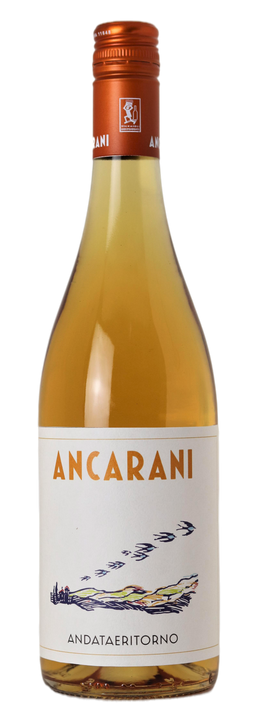ANC0422OW12
Andataeritorno
2022
Emilia-Romagna
Organic Farming
Wild yeasts
Low Sulphur
Emilia is name¬d for the Via Aemilia, a road built by the ancient Romans that connected Bologna to the cities of Modena, Reggio Emilia and Parma¬ to its northwest. The ancient Romans also lent their name to the eastern portion of the province, which stretches to the Adriatic Sea and includes Ravenna, once the capital of the Western Roman Empire. Emilia-Romagna lies to the south of the Po River, and the fertile Po valley is the source of the region's agricultural wealth and high standard of living. Over the years, wines have developed and thrived in certain locations, with specific grapes and cultivation techniques suited to the conditions of the soil and climate. Local wines and foods have evolved in close association with each other. Emilia-Romagna is the source of many treasures of Italian cuisine, such as parmigiano reggiano cheese, Prosciutto di Parma and other cured meats. The unique wines of the region are meant to complement the flavours of the local cuisine.
Ancarani is a small, family-run winery nestled in the hills of Faenza, Emilia-Romagna, in the hamlet of Santa Lucia. The estate's origins date back to 1934 when Grandfather Pietro, affectionately known as Delmo, purchased the first hectares of land. His vision was clear: to protect, nurture, and share the land’s story with future generations. Today, that legacy is upheld by Claudio Ancarani, who pours his passion and dedication into every aspect of the vineyard and winery. The estate’s vineyards are situated near the historic fortress of Oriolo, where only native varieties thrive. These include Sangiovese, Burson, Centesimino, Famoso, and Albana—grapes deeply tied to the region’s identity. Ancarani’s approach is rooted in tradition: low-intervention farming, hand-harvesting, and meticulous grape selection to preserve the land’s natural balance and enhance the purity of each wine. In the cellar, extended macerations allow the wines to fully express the character of their terroir. Sulphite use is kept to a minimum, and biodiversity is prioritised, ensuring that the vineyard remains a thriving, self-sustaining ecosystem. Ancarani produces just under 40,000 bottles each year, spread across nine labels—primarily white wines that reflect the region’s unique characteristics. These are our favourites.

Wine details
ANC0422OW12
Ancarani
Andataeritorno
2022
Emilia-Romagna
Organic Farming
Wild yeasts
Low Sulphur
Emilia is name¬d for the Via Aemilia, a road built by the ancient Romans that connected Bologna to the cities of Modena, Reggio Emilia and Parma¬ to its northwest. The ancient Romans also lent their name to the eastern portion of the province, which stretches to the Adriatic Sea and includes Ravenna, once the capital of the Western Roman Empire. Emilia-Romagna lies to the south of the Po River, and the fertile Po valley is the source of the region's agricultural wealth and high standard of living. Over the years, wines have developed and thrived in certain locations, with specific grapes and cultivation techniques suited to the conditions of the soil and climate. Local wines and foods have evolved in close association with each other. Emilia-Romagna is the source of many treasures of Italian cuisine, such as parmigiano reggiano cheese, Prosciutto di Parma and other cured meats. The unique wines of the region are meant to complement the flavours of the local cuisine.
Ancarani is a small, family-run winery nestled in the hills of Faenza, Emilia-Romagna, in the hamlet of Santa Lucia. The estate's origins date back to 1934 when Grandfather Pietro, affectionately known as Delmo, purchased the first hectares of land. His vision was clear: to protect, nurture, and share the land’s story with future generations. Today, that legacy is upheld by Claudio Ancarani, who pours his passion and dedication into every aspect of the vineyard and winery. The estate’s vineyards are situated near the historic fortress of Oriolo, where only native varieties thrive. These include Sangiovese, Burson, Centesimino, Famoso, and Albana—grapes deeply tied to the region’s identity. Ancarani’s approach is rooted in tradition: low-intervention farming, hand-harvesting, and meticulous grape selection to preserve the land’s natural balance and enhance the purity of each wine. In the cellar, extended macerations allow the wines to fully express the character of their terroir. Sulphite use is kept to a minimum, and biodiversity is prioritised, ensuring that the vineyard remains a thriving, self-sustaining ecosystem. Ancarani produces just under 40,000 bottles each year, spread across nine labels—primarily white wines that reflect the region’s unique characteristics. These are our favourites.
